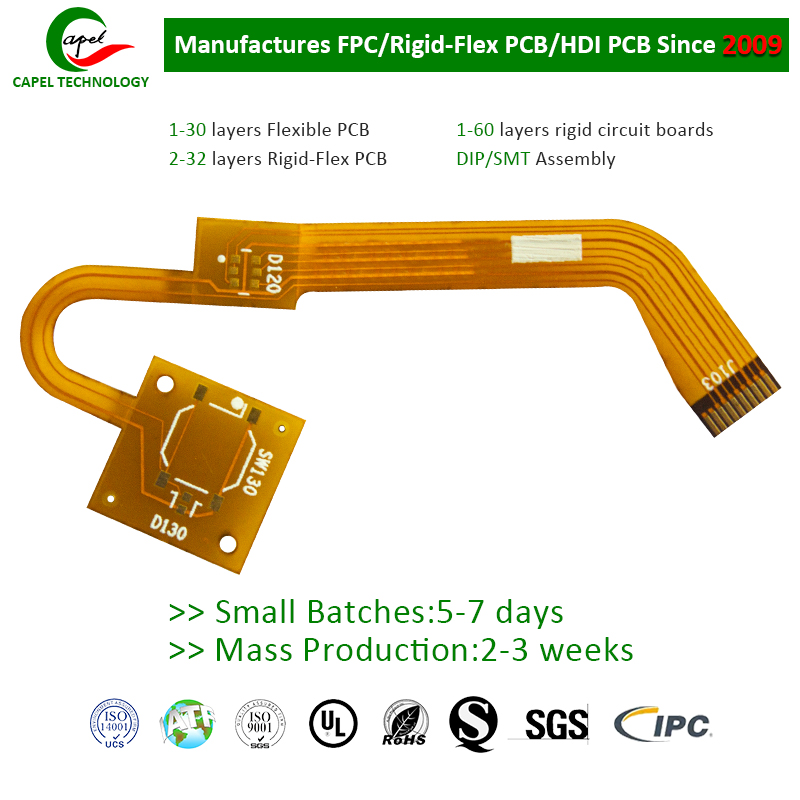In this article, we’ll take a closer look at the differences between flexible and rigid PCBs and discuss the key factors to consider when making this important decision.
In the field of electronics, printed circuit board (PCB) selection plays a vital role in the functionality and performance of the device. Two common PCB types are flexible PCB and rigid PCB. Each type has its own unique advantages and disadvantages, so it’s critical that designers and engineers understand the factors involved in selecting the correct PCB type for their specific application.
What is a flexible PCB?
Flexible PCBs, also known as flex PCBs or flex circuits, are manufactured using thin layers of flexible insulating material, usually polyimide or polyester. This flexible material allows PCBs to bend, twist and bend to fit into tight spaces or unconventional shapes. Flexible PCBs offer excellent resistance to vibration and shock, making them ideal for applications prone to extreme motion or physical stress.
Advantages of flexible PCB
1. Space-saving design: Flexible PCBs can be manufactured with a three-dimensional layout, allowing components to be placed on multiple planes. This opens up opportunities for compact designs and smaller form factors, making them critical for size-constrained devices.
2. Improved reliability: Since flexible PCB has excellent resistance to vibration and impact, it is more reliable compared to rigid PCB. This makes them suitable for industries such as aerospace, medical and automotive where reliability is critical.
3. Weight reduction: The flexible nature of flexible printed circuit boards can reduce weight by eliminating bulky connectors and cables. This is particularly beneficial for industries such as consumer electronics, where lightweight and portable devices are in high demand.
What is a rigid PCB?
Rigid PCBs, as the name suggests, are manufactured using rigid materials such as fiberglass or epoxy resin. Unlike flexible PCBs, they cannot bend or twist, providing a more stable and rigid structure. Rigid PCBs are used in a wide variety of applications, from simple household electronics to complex industrial systems.
Advantages of Rigid PCB
1. Higher component density: Rigid PCB provides better support and stability to components due to its solid structure. This allows for higher component density, making them suitable for applications requiring complex circuits and integrated circuits.
2. Easier to assemble: The rigid structure of rigid PCB simplifies the assembly process as components can be precisely placed and soldered. This reduces the chance of assembly errors and increases production efficiency.
3. Cost-Effectiveness: Rigid PCBs are generally more cost-effective than flexible PCBs. This is because rigid PCBs are the most commonly used type, increasing yields and reducing manufacturing costs.
Factors to consider when choosing PCB type
1. Flexibility needs: Consider the specific flexibility requirements of your facility. If your application involves constant motion or irregular shapes, a flexible PCB will be more suitable. On the other hand, if your device has a fixed design or requires strong support for components, a rigid PCB may be a better choice.
2. Space constraints: Evaluate the available space on the PCB. If your device requires a compact design or needs to be installed in a small area, flexible PCBs can offer significant advantages in terms of reduced size and three-dimensional placement.
3. Component Complexity: Determine the complexity of the circuit and the number of integrated circuits involved. Rigid PCBs are more suitable for applications requiring high component density and complex circuit designs.
4. Cost considerations: Analyze your budget and cost constraints. While rigid PCBs are generally more cost-effective, flexible PCBs may offer additional advantages that outweigh the higher cost. Assess overall value and long-term advantages before making decisions based on cost alone.
In conclusion
Choosing between flexible and rigid PCBs is a critical decision that can impact the functionality, reliability, and performance of your electronic device. Understanding the pros and cons of each type, and carefully considering the specific requirements of your application, is key to making the right choice. Whether you prioritize flexibility, space-saving design, component density or cost-efficiency, there is a PCB type to meet your needs. So choose the right PCB type for your project, make an informed decision and ensure the success of your device.
Post time: Oct-11-2023
Back







